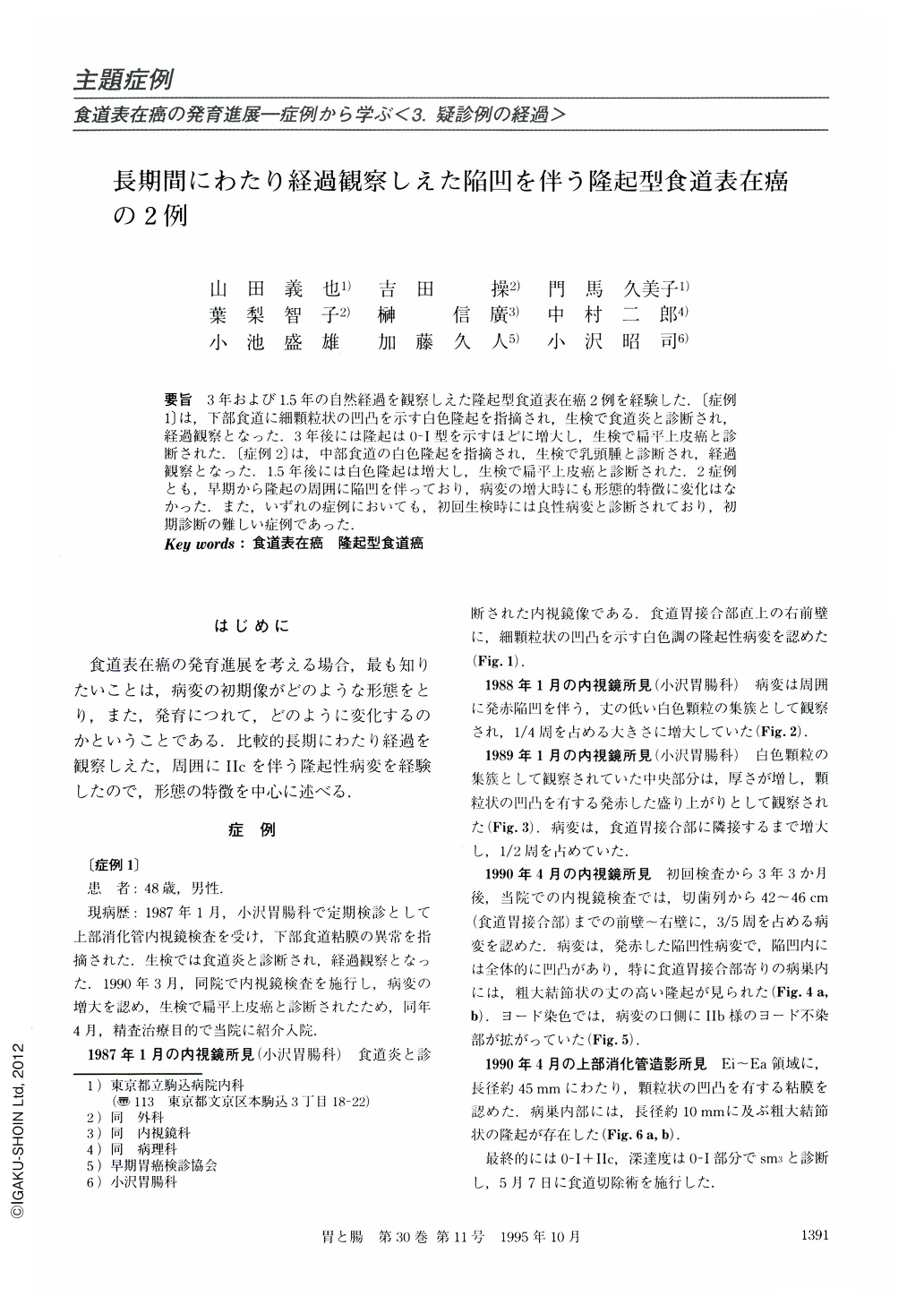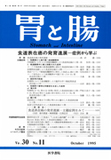Japanese
English
- 有料閲覧
- Abstract 文献概要
- 1ページ目 Look Inside
要旨 3年および1.5年の自然経過を観察しえた隆起型食道表在癌2例を経験した.〔症例1〕は,下部食道に細顆粒状の凹凸を示す白色隆起を指摘され,生検で食道炎と診断され,経過観察となった.3年後には隆起は0-1型を示すほどに増大し,生検で扁平上皮癌と診断された.〔症例2〕は,中部食道の白色隆起を指摘され,生検で乳頭腫と診断され,経過観察となった.1.5年後には白色隆起は増大し,生検で扁平上皮癌と診断された.2症例とも,早期から隆起の周囲に陥凹を伴っており,病変の増大時にも形態的特徴に変化はなかった.また,いずれの症例においても,初回生検時には良性病変と診断されており,初期診断の難しい症例であった.
(Case 1) A 48-year-old male was admitted to our hospital because of esophageal abnormalities. Three years ago during conventional endoscopy white and finely granular changes at the distal esophageal mucosa were noticed and suspected to be esophagitis. Recent endoscopy revealed a superficial and protruded esophageal lesion which was diagnosed as submucosal cancer (type 0-Ⅰ). A radical esophagectomy was carried out. Pathological studies on resected specimens revealed a squamous cell carcinoma infiltrating massively into the submucosa (sm3) without lymph node metastasis. The patient is alive without any sign of recurrence after five years and four months following the surgery.
(Case 2) A 63-year-old male was admitted to our hospital because of esophageal tumor. He had already undergone an endoscopy and a small, white and elevated lesion was noticed in the middle third of the esophagus. Pathological studies on bite biopsy specimens revealed a papilloma. A repeated endoscopy revealed that the esophageal tumor had increased in size, which was suggestive of superficial and protrudingtype esophageal cancer (type 0-Ⅰ). A bite biopsy revealed a squamous cell carcinoma. The patient strongly wanted endoscopic mucosal resection as treatment. Pathological studies on the resected specimen revealed a squamous cell carcinoma reaching to the muscularis mucosae (m3). He received irradiation to the posterior mediastinum for probable lymph node metastasis. He is alive without any sign of recurrence after four years and four months.
These results suggested that there are two different type 0-Ⅰ esophageal cancers. One was a solid tumor with protrusion, reddening and invasion into the deeper third of the submucosa. Another was a protruded lesion with white colour and granular changes. It infiltrated the muscularis mucosae but not the submucosa. In cases with type 0-Ⅰ lesions, these gross findings should be considered for precise estimation of the depth of invasion.

Copyright © 1995, Igaku-Shoin Ltd. All rights reserved.


